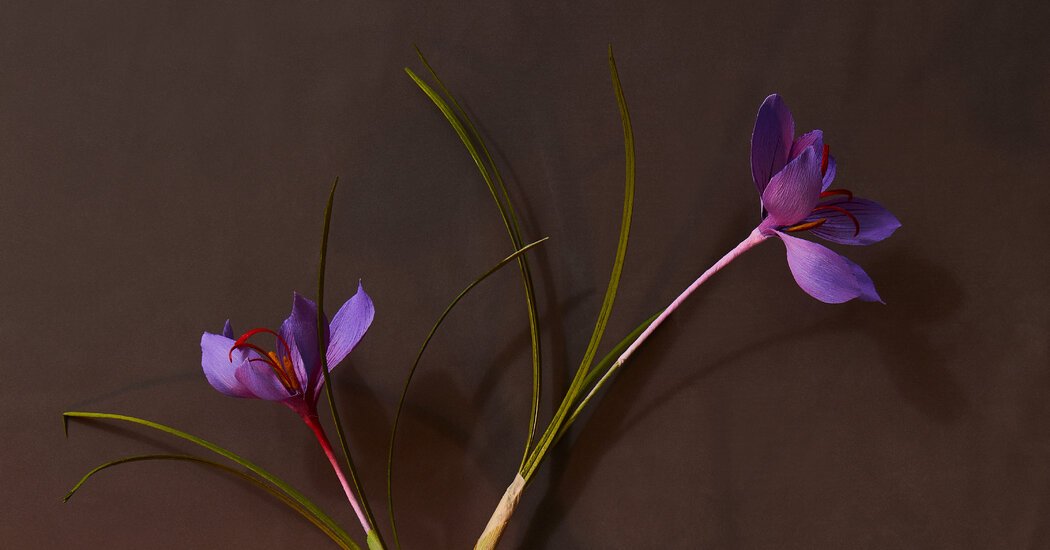T Magazine|How the World’s Most Expensive Spice Is Grown
https://www.nytimes.com/2024/11/14/t-magazine/saffron-kashmir.html

T’s Travel Issue
A glimpse at Kashmir’s saffron harvest.
Video

10 Flowers, 10 Places
Countries and regions around the world where flowers play a vital role — in cultural and religious traditions, the economy and daily life.
A closer look at lotuses in Sri Lanka, amaranths in Peru, roses in Oman, marigolds in India, waterlilies in Vietnam, saffron in Kashmir, jasmine in Egypt, orchids in Papua New Guinea, proteas in South Africa and azaleas in Japan.
Its vibrant purple petals notwithstanding, the saffron flower (Crocus sativus) is valued primarily for what hides beneath those petals: tiny, fiery orange stamens that, once plucked and processed, become the world’s most expensive spice, one that adds sweet flavor and deep golden color to dishes as culinarily disparate as Spanish paella, South Asian pulao and Swedish St. Lucia buns. Known botanically as a triploid owing to its three sets of chromosomes, the saffron crocus can neither grow wild nor reproduce without human intervention. Instead the plant must be propagated and harvested manually, a laborious undertaking that Bronze Age Greeks are believed to have pioneered and that helps account for its price. Today saffron is grown in a latitudinal belt that runs from the Mediterranean to South Asia, with Iran currently contributing about 85 percent of the global supply. But saffron from Kashmir is arguably the most highly prized, says Sana Javeri-Kadri, whose seven-year-old Oakland, Calif.-based spice business, Diaspora Spice Co., sources its inventory from a small family farm in the Kashmiri town of Pampore, where the flowers have been cultivated since at least the 12th century. Harvested between late October and early November, the saffron there grows alongside apricots and almonds in particularly porous soil that’s fed by nutrient-rich snowmelt all spring. The result is an extra-potent crop redolent of almonds and honey that’s hand-processed, with each individual stamen massaged to bring its natural oils to the surface. The beauty of the valley during the saffron bloom, she says, is almost otherworldly. “The light is buttery yellow, the leaves of the fruit trees are bright orange and the ground is blanketed in purple flowers,” says Javeri-Kadri, who has attended Pampore’s fall harvest for three years running. “I’ve never seen those colors together in nature before. It’s stunning.”
Set designer’s assistant: Maja Secerov
Advertisement
